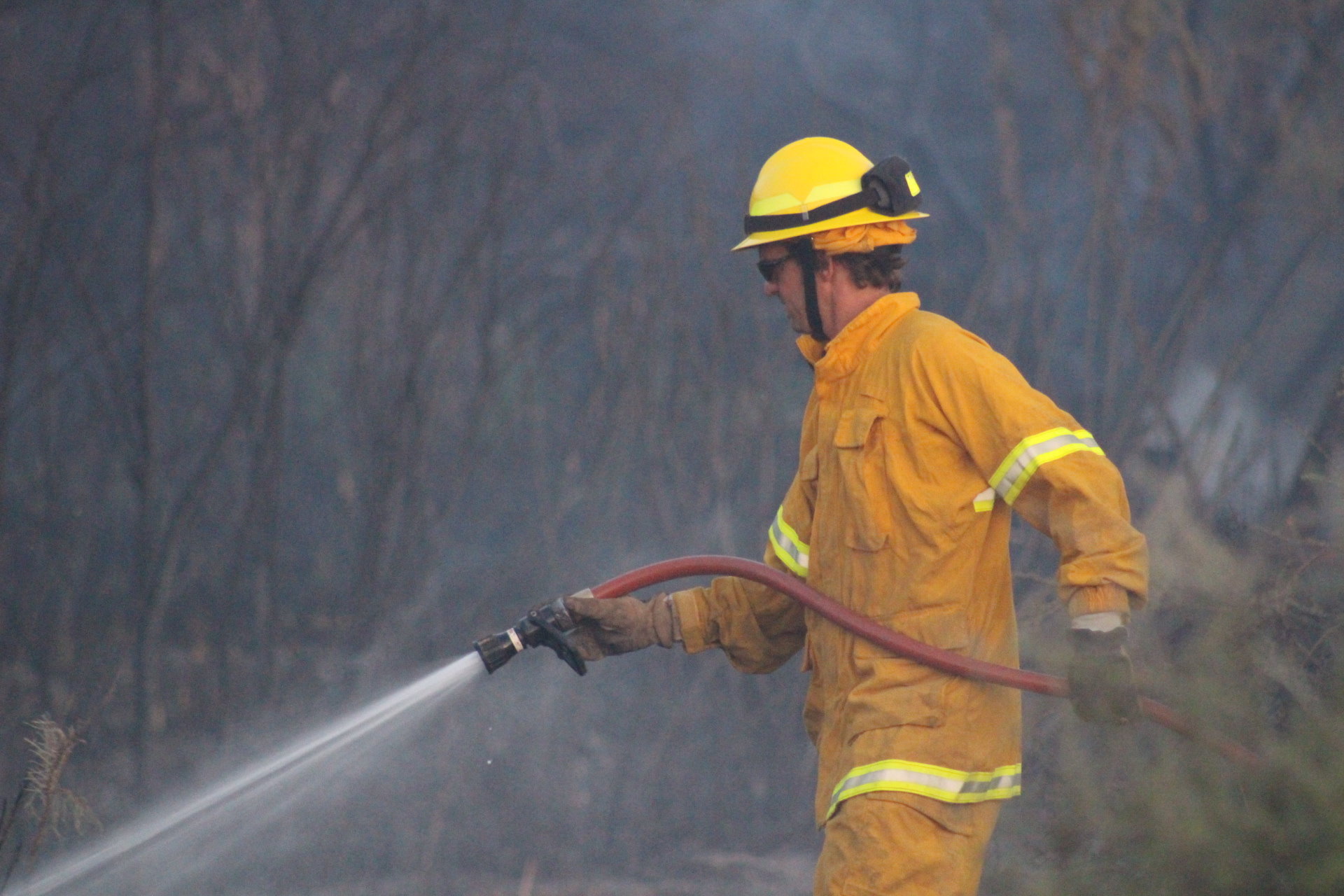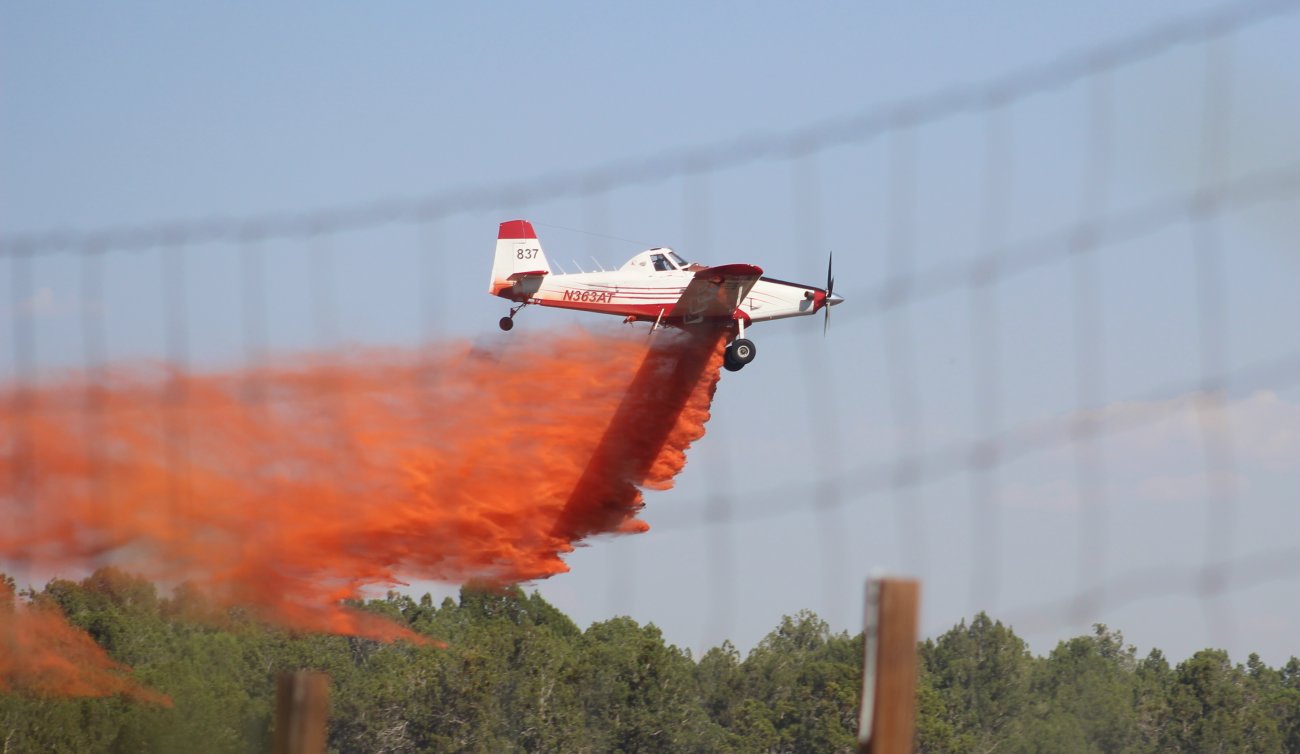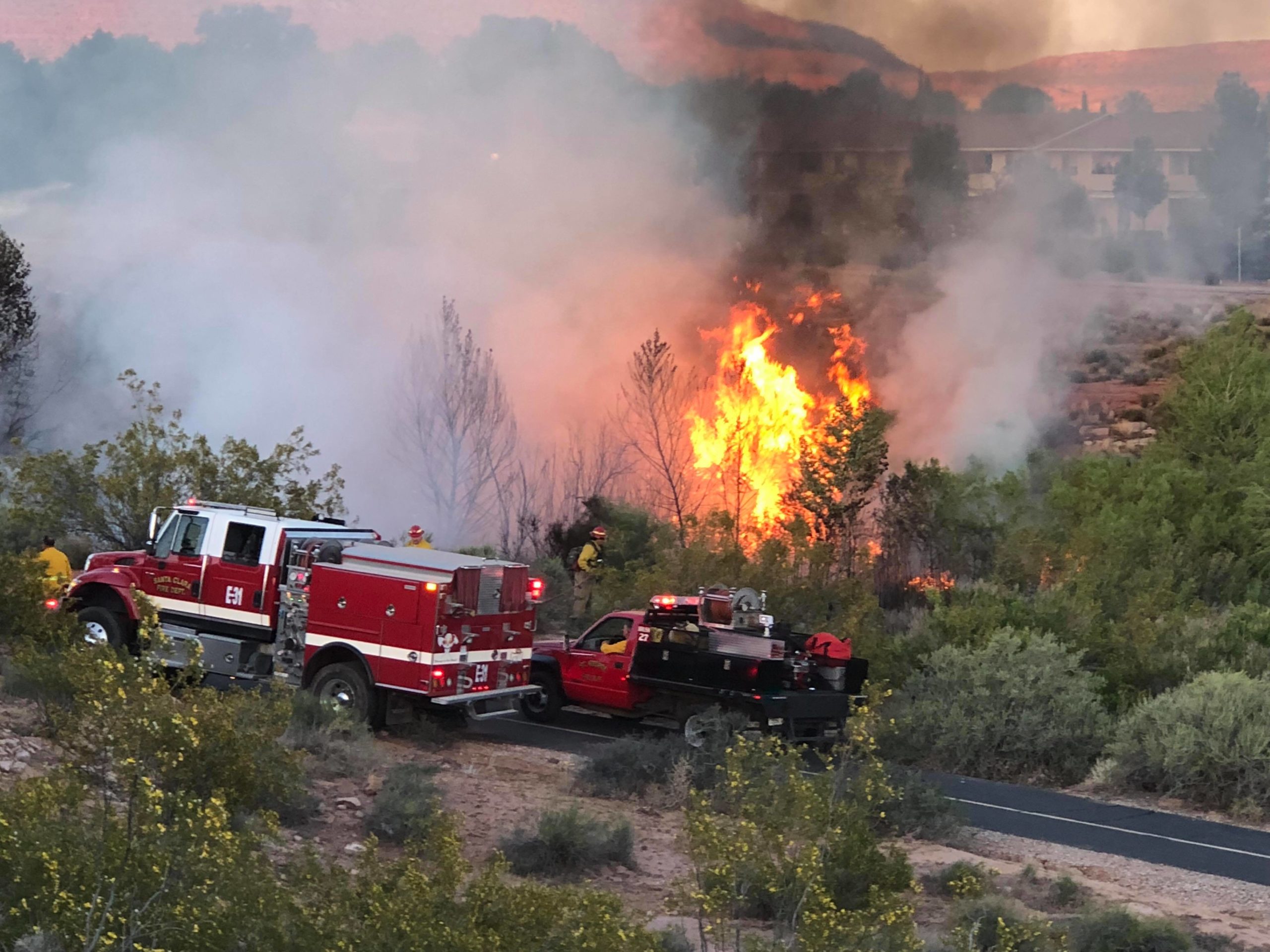
ST. GEORGE — State and local fire officials are warning of a potentially busy and challenging fire season this year as temperatures rise and an increasing amount of people embrace outdoor recreation. Firefighters are also being challenged by reduced training available during the COVID-19 pandemic.

“Precipitation received this past winter and spring has promoted a hazardous grass crop in lower elevations and will likely pose an increased fire hazard when it dries out,” Mike Melton, a fire management officer for the Utah Division of Forestry, Fire and State Lands said in a Friday press release, adding, “We are also seeing a significant increase in public outdoor recreation and recognize that it could contribute to the number of ignitions.”
The Color County Fire Interagency, which covers southwest Utah and northwest Arizona and consists of federal, state and local land management and fire agencies, expects conditions across the region to reach dangerous levels this summer – especially in the lower elevations where many people live, work and recreate.
“There is a good possibility that many areas of Color Country may once again go into fire restrictions this season,” Melton said in the release. The snow is quickly melting from the higher elevations and the conditions for burning will increase as the summer progresses.
Forecasters are predicting summer bringing above-average temperatures across the Southwest. The higher temperatures will lend to vegetation drying out quicker and becoming a fire hazard.
Fire managers are urging the public to be aware of this danger and take appropriate precautions when conducting any activity that could produce heat, sparks or flames.

“Please be especially careful where you build campfires, completely extinguish campfires with water and be cognizant of where you park your vehicle. A hot exhaust system or embers from a campfire can result in a very dangerous situation for firefighters and the public,” Melton said.
Cutting, grinding and welding of metal is also a leading wildfire cause in southwest Utah. Such actions are believed to be behind a July 2017 fire that engulfed a wash in the middle of the Paradise Canyon subdivision in St. George.
An estimated 50% of the wildfire that firefighters respond to are believed to be human-caused, Melton told St. George.
Despite this, he said last year people in the area behaved themselves so the fire season wasn’t as bad as it could have been, and hopes that trend will continue this year. This remains to be seen with people fleeing to the outdoors after being cooped up in their homes due to COVID-19 restrictions.
While a side effect of pandemic restrictions may cause more people to take to the great outdoors, it also presents some complications for firefighters, particularly in how they train and approach fires.

“We’re at a disadvantage this year because of COVID-19,” St. George Fire Chief Robert Stoker said.
The Fire Department hasn’t been able to hold its weekly group training, or take part in larger interagency training which helps with coordination between the various fire agencies. Instead, they’ve been forced to hold smaller trainings per crew, which usually contains three to four people.
Though it is primarily an urban-based agency, the St. George Fire Department also responds to brush fires on Interstate 15 within St. George and south into the Virgin River Gorge.
“We’ve moved to virtual and online training for this fire season,” Melton said. Fire engine crews and hand crews are also treated as “family units,” which allows them to continue working close together. They are also advised to be conscious of social distancing during the firefighting operations.
“When we look at our firefighters, they are a finite resource and we want to keep them safe,” Melton said.
Those going to recreate outside are again asked to be careful and mindful or potential fire hazards, as people who start fires – intentionally or otherwise – can find themselves paying to the cost of fire suppression efforts, as well as the cost of any damage caused by the fire.
“Be very careful out there,” Stoker said.
Copyright St. George News, SaintGeorgeUtah.com LLC, 2020, all rights reserved.